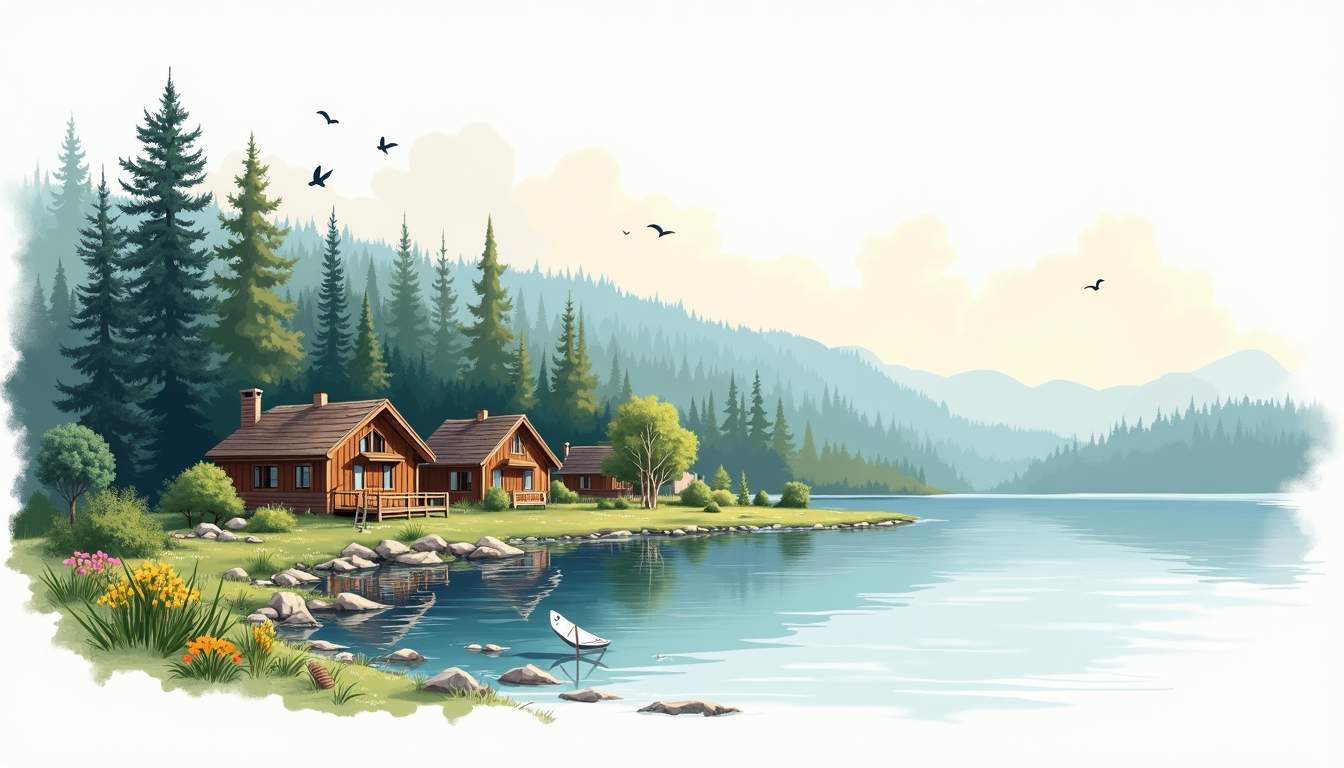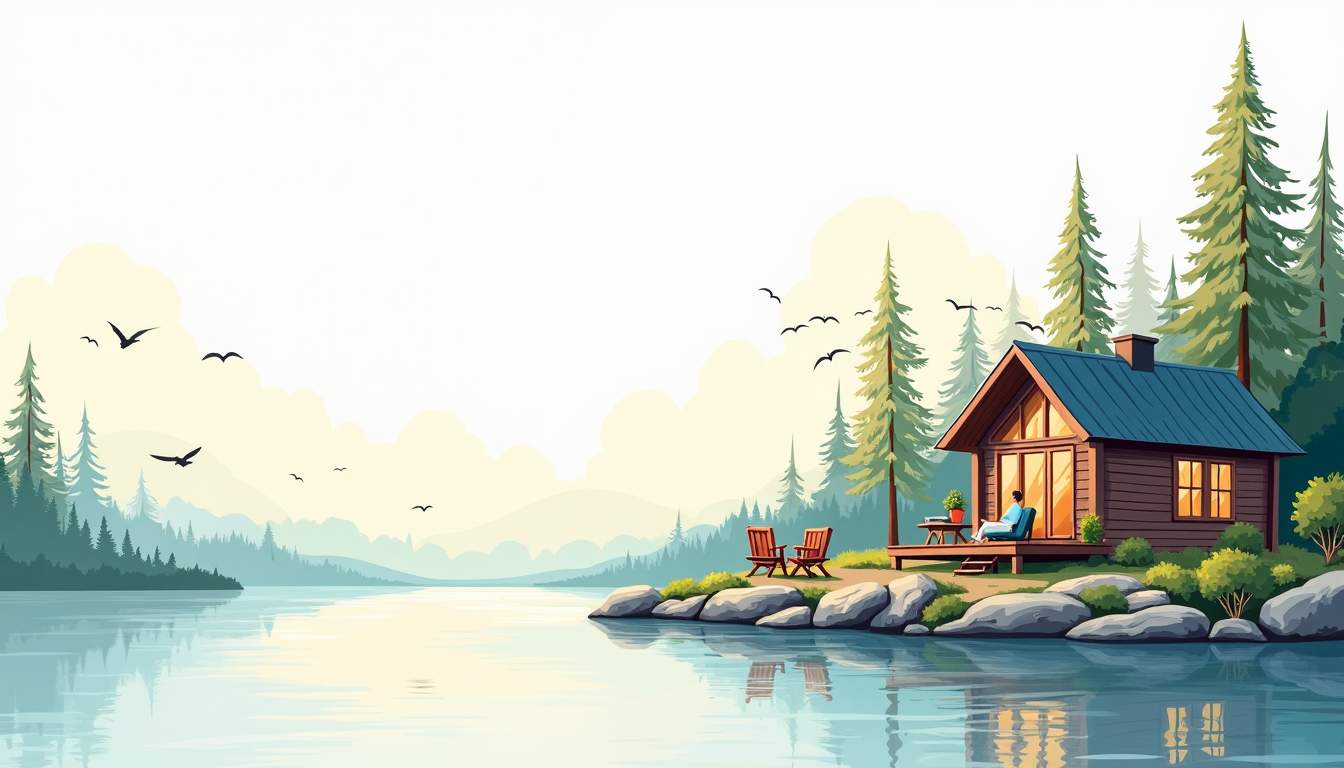
The lake can be more than a weekend escape or a postcard memory. It can become a meaningful part of daily life, shaping routines, relationships, health, and a sense of belonging. This article explores practical ways to weave the lake into an everyday existence — from morning rituals and social patterns to long-term design choices and mindful habits that create a lasting connection with water, shore, and sky.
Water has a way of slowing thought and clarifying priorities. The presence of a lake changes the tempo of life: mornings feel cooler, evenings stretch longer, and activities naturally lean toward the outdoors. Studies show that proximity to water is linked with reduced stress and improved mental well-being, but the real value goes beyond measurable health benefits. A lake provides a shared focal point for a neighborhood, a place to celebrate milestones, and an anchor for seasonal rhythms.

Relationships often deepen in the gentle containment of shorelines — conversations can be longer, interruptions fewer, and experiences more visceral. Holidays, weekend barbecues, or quiet solo paddles all build memory. That accumulation of small, lake-centered moments is what transforms a place into home rather than simply a location on a map.
Big life changes rarely stick; tiny rituals do. Begin by adding short, consistent lake-related actions to the day: a five-minute stretch on the dock before work, a sunrise coffee with a view, or an evening walk along the shallows to release the day's tension. These practices are compact, repeatable, and easy to protect from competing demands.
Commuting becomes less of a chore when routed thoughtfully. If driving past a lake adds a sense of calm, shift the schedule to allow that route when possible. For those who bike or walk, create a path that includes a lakeside segment. Even an extra ten minutes of lakeside scenery can change the emotional baseline for the whole day.
Lake life is inherently seasonal. Embrace that cycle rather than resisting it. Plan outdoor meetings or brainstorming sessions during warm months, and schedule reflective, slower-paced work during colder ones. Adjust expectations and habits to accommodate shorter days, icy docks, or the migratory birds that claim the shoreline at certain times of year.
Architectural choices shape daily experience. Prioritize windows, patios, and living areas that face the lake. Visual access matters: even a simple framed view or a skylight that captures the color of sunset influences mood. Sliding doors that open directly to a deck dissolve the barrier between indoors and outdoors, making spontaneous lakeside moments more likely.
Water environments are demanding on materials. Select finishes that tolerate moisture, sun, and mud — composite decking, marine-grade stainless steel, and fabrics treated for mildew resistance. Low-maintenance landscaping that tolerates splash zones and occasional flooding helps preserve the home and reduces the chores that can otherwise turn lake life into an obligation.
A single lakeside yard should serve multiple needs: a social area for friends and family, an active zone for launching kayaks or skipping stones, and a quiet corner for reading or watching wildlife. Thoughtful placement of seating, pathways, and plantings guides behavior and makes the space feel larger and more versatile.
Lake living comes with recurring expenses: dock maintenance, boat storage, watercraft registration, and seasonal yard work. Factor these into long-term budgets to avoid surprises. Setting up a maintenance fund or scheduling small annual projects prevents deferred work that can compound into larger bills and lost enjoyment.

Integrating the lake into life often requires a shift in spending priorities. Instead of chasing the latest interior trend, consider investing in quality paddles, a sturdy canoe, or an insulated outdoor kitchen setup that will be used repeatedly. Experiences that take place on or near the lake — lessons, guided tours, or membership in a local sailing club — often yield more lasting satisfaction than objects.
Time is the scarcest resource. Build lake time into weekly calendars as intentionally as other commitments. Treat short lake outings as non-negotiable appointments to protect them from being crowded out. When work is demanding, even a thirty-minute midweek paddle or a weekend sunrise can maintain the connection and prevent the lake from receding into an occasional hobby.
A lakeside property naturally becomes a gathering place, but hosting thoughtfully ensures that social use aligns with values. Plan potlucks that celebrate seasonal harvests, invite neighbors for an organized shoreline clean-up followed by a casual swim, or start a monthly sunset music night with understated rules to keep things neighbor-friendly. Small norms set expectations and keep gatherings sustainable.
Healthy lakes require informed stewardship. Joining or supporting a local lake association, participating in water-quality monitoring, and volunteering for shoreline conservation can create social bonds while protecting the resource. Knowing the ecological needs of the lake deepens appreciation and embeds residents in decisions that shape the lake’s future.
Lake life naturally lends itself to multigenerational interaction. Children find space to explore, while older adults can find restorative quiet and gentle activity. Organize intergenerational projects — storytelling evenings, shared gardening, or simple craft sessions — that honor different rhythms and skills. These activities create durable social networks rooted in shared place.
Select recreation that aligns with both lifestyle and environment. Non-motorized options like kayaking, paddleboarding, and sailing offer low-impact ways to enjoy water while providing excellent exercise. If motorized boats are preferred, adopt practices that reduce wake, avoid shallow spawning areas, and use efficient engines to limit noise and pollution.
Skills amplify access to the lake. Basic water safety, navigation, boat maintenance, and knot-tying create confidence and independence. Signing up for classes or mentoring with experienced locals accelerates learning and can lead to friendships. Once a few core competencies are mastered, the lake becomes a place of creativity rather than caution.
Play at the lake doesn’t always mean speed or competition. Many of the most memorable moments are slow: watching dragonflies skim the reeds, letting a fishing line drift without expectation, or sketching ripples on paper. Embracing unhurried forms of recreation makes the lake accessible on busy days and transforms ordinary visits into restorative rituals.
Regular time near water functions as a reset button for attention and stress. Incorporate short mindfulness practices into lakeside visits: focused breathing while watching the horizon, a walking meditation along the shore, or a simple body scan on a flotation device. These practices anchor mental health and make stress easier to manage between lake outings.
Lake activities naturally encourage movement that is effective and gentle. Paddling engages the core without heavy joint impact, shoreline walking mixes balance and endurance, and gardening in a riparian zone builds strength through functional activity. These movements support long-term health better than sporadic, high-intensity workouts that might be harder to sustain.
Seasonal living by a lake involves environmental hazards that change through the year: strong sun in summer, hypothermia risk in early spring and late fall, and ticks in warm months. Being informed and prepared — clothing layers, sunscreen, insect protection, and awareness of local harmful algal blooms — keeps the lake welcoming rather than risky.
Climate variability means lakeside living requires adaptability. Design landscaping and structures to handle variable water levels, including permeable surfaces, movable docks, and plantings that tolerate both drought and occasional inundation. Building flexibility into property plans protects investment and reduces stress when conditions shift.
Leaving a lake-connected legacy requires intentional transmission of skills and values. Encourage children and younger neighbors to learn boat safety, species identification, and shoreline etiquette. Passing down knowledge creates caretakers who will steward the lake in future decades, and it makes the lake feel like a shared, intergenerational responsibility.
Physical structures are important, but stories sustain culture. Collect and share tales about the lake — who used it before, memorable storms, favorite fishing spots, personal traditions tied to the seasons. These narratives make the lake more than a backdrop; they make it a living place that connects people across time and keeps care and affection alive.
Begin with a simple list of five achievable actions: a weekly fifteen-minute dock visit, one new piece of gear that increases comfort (a reliable life jacket or a cozy blanket), a commitment to attend one community lake meeting, a small planting project with native species, and a shallow, no-pressure outing to learn a new skill like paddleboarding. Small, concrete steps build momentum.

Balance ambition with patience; the goal is to make the lake part of ongoing life, not to conquer every shoreline activity. Over time, these small adjustments add up, converting occasional trips into a lifestyle where the lake is woven into routines, relationships, and a deeper sense of place.
Building a life that includes the lake is an invitation to rearrange priorities, design thoughtfully, and cultivate routines that honor both people and place. It does not require a dramatic upheaval — rather, an accumulation of choices that lean into the water's slow, steady influence. When the lake becomes a regular companion, daily life gains a quieter pace, richer social ties, and more opportunities for meaningful rest.
Respect for the lake and for neighbors, an investment in durable skills and materials, and a willingness to adapt over time create a life where the water is both a resource and a refuge. That balance is the essence of lake living: practical, restorative, and deeply human.
Embrace the lifestyle of serene lake living combined with luxury and community at Tennessee National. Nestled in Tennessee’s stunning landscapes, our premier gated community offers waterfront access, exceptional amenities, and homes designed to harmonize with nature. Whether you seek a move-in ready home or a custom build, start weaving the lake into your daily life with us. Schedule a private tour today and take the first step toward a life where the lake is your everyday backdrop.